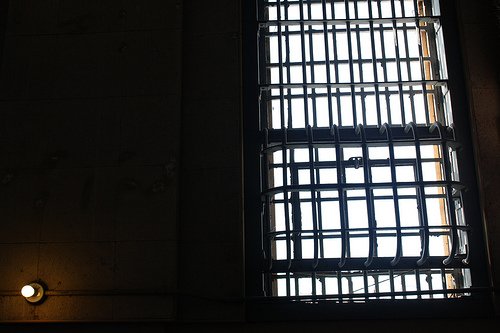Compared to the rest of the world, the United States has a shockingly high incarceration rate. Only Seychelles has a higher prison population rate than America. About a quarter of the world’s total prison population is incarcerated here. The situation isn’t helped by the fact that two-thirds of prisoners reoffend within three years of their release. While other countries focus successfully on rehabilitation, the United States is falling seriously short.
Incarceration is the Most Common Sentence
Image via Flickr by dereksky
Incarceration has a negative impact on criminals, yet the United States incarcerates criminals far more often than other countries. In Germany, incarceration rates are just 6 percent. The Netherlands incarcerates just 10 percent of its criminals. Yet the United States has a staggering incarceration rate of 70 percent. It will take major changes in the criminal justice system to alter these outcomes, but with a fresh outlook from new graduates with a masters in criminal justice, reform may become possible.
Rehabilitation Programs Are Underutilized
Rehabilitation programs have an impressive success rate when properly utilized. In Norway, rehabilitation is the primary focus of prisons, with facilities located in relaxing wooded settings with ample amenities. While this approach may seem too plush for American prison systems, it does get results with a recidivism rate under 30 percent.
Meanwhile, a report from Nebraska revealed that just 13 percent of prison inmates were enrolled in substance abuse, anger management, and sex offender treatment. One in seven were on a waiting list for these treatments, and some were blocked from parole as a result.
Re-Entry Programs Are Limited
Louisiana has the worst incarceration rate in the United States, and its prison system highlights many of the problems that lead to high recidivism. Among local prisons, re-entry programs are scarce. In 2012, the New Orleans Parish sheriff reported that a move to temporary quarters more than doubled re-entry, making it more difficult than ever to provide re-entry programs. Meanwhile, violent offenders are ineligible for such programs, though they face release as well.
Released Prisoners Face Limited Opportunities
Today’s prisoners re-enter society at a distinct disadvantage. They’re barred from many jobs, making it difficult if not impossible for some to find gainful employment. Further, they have limited access to housing subsidies and welfare benefits.
Piper Kerman’s book “Orange Is The New Black: My Year in a Women’s Prison” may have spawned a wildly popular — and inaccurate — television portrayal of prison life, but the story carries some poignant messages. In it, Kerman relates stories of laughable re-entry programs that leave inmates no better prepared to face the outside world than they were upon incarceration. She goes on to describe inmates who are afraid to leave prison because their prospects outside are worse than they are in jail.
Without major reforms, it seems unlikely that the United States will significantly lower recidivism. However, the successful programs in other countries have shown that it is possible to provide prisoners with a dramatically different experience while preparing them better for their life beyond bars.

